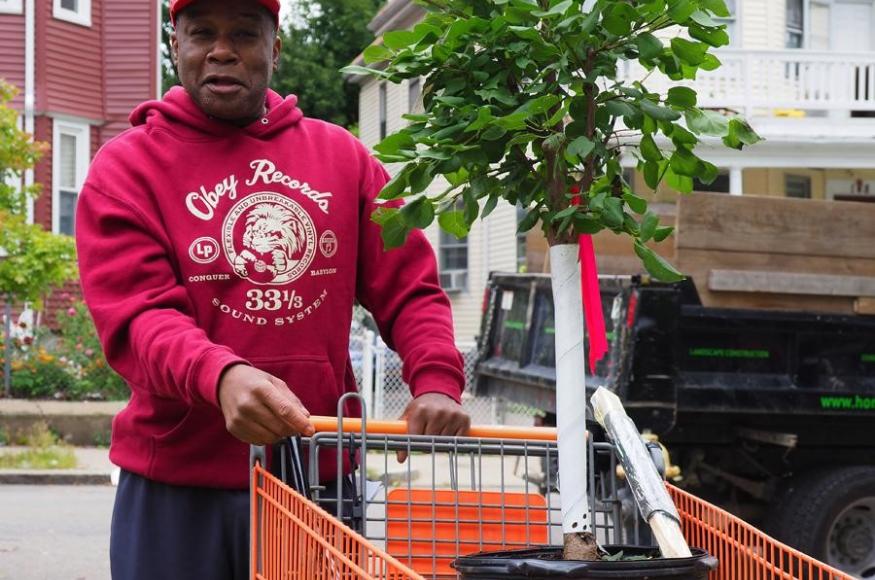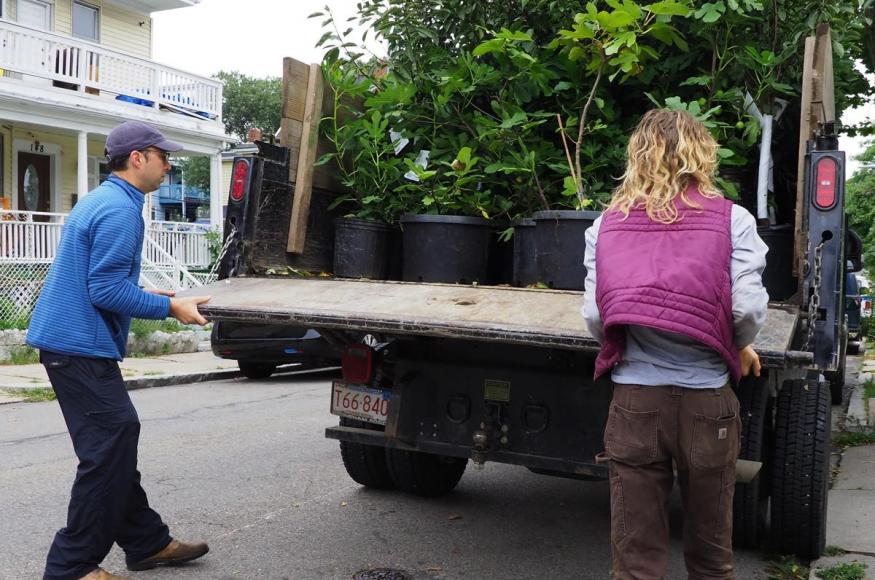Management Goals

General goal: Increase the tree canopy coverage in the city of Boston, especially in under-canopied and under-resourced neighborhoods.
Goals for residential and multi-family residential properties:
1) Give away 1000 trees to residents to be planted in private yards.
2) Educate Boston residents on the proper tree planting and care practices for the health and longevity of trees in their private yard.
3) Implement follow-up engagement with residents who received trees to ensure the proper long-term care of yard trees.
Climate Change Impacts
For this project, the most important anticipated climate change impacts include:
Warmer temperatures and altered precipitation in New England and northern New York will interact to change soil moisture patterns throughout the year, with the potential for both wetter and drier conditions depending on the location and season.
Certain insect pests and pathogens will increase in occurrence or become more damaging in New England and northern New York.
The urban heat island effect can exacerbate the effects of increasing temperatures.
Impervious cover can exacerbate the effects of increased heavy precipitation events in urban areas.
Transplanted trees are inherently more vulnerable to and less resilient in the face of the impacts of climate change.
Challenges and Opportunities
Climate change will present challenges and opportunities for accomplishing the management objectives of this project, including:
Challenges
The urban heat island effect disproportionately impacts lower-resourced neighborhoods with minimal canopy cover. Trees planted by residents in Boston will face rising temperatures and the exacerbating conditions of a heat island.
Trees planted by residents in private yards may have to endure some less-than-ideal patterns of soil moisture. The patterns are unpredictable and therefore it may be more difficult for residents to adapt their care regimens.
In future, worsening climate conditions, trees planted by residents in private yards may struggle to survive with increased occurrences of invasive disease/pests.
Opportunities
A warming climate may allow for a broader range of species to be introduced to Boston's forest, increasing diversity.
Trees planted in residents' yards will likely have access to more soil moisture than street trees, especially during periods of less precipitation.
Adaptation Actions
Project participants used the Adaptation Workbook to develop several adaptation actions for this project, including:
Area/Topic
Approach
Tactics
Residential/Multi-family residential
Through the tree giveaway program, residents will be encouraged to support canopy connectivity in their own private yards. Residents' yards can serve as bridges for the urban canopy so that forest and arboreal species are able to migrate and find shelter.
Research will be done into which species are better suited for future climate conditions in the City of Boston. In selecting certain species for the giveaway program, residents’ yards will be retrofit with more suitable and resilient trees.
Species that are likely to show resilience and hardiness in the City of Boston both in the immediate future and further (50+ years) will be selected for the tree giveaway program.
Tree species diversity will be prioritized in the tree giveaway program in order to reduce the impact of biological stressors, such as invasive pests and diseases.
Monitoring
Project participants identified several monitoring items that could help inform future management, including:
An evaluation of the percentage of trees that are planted after 2 weeks: Data collection achieved through personal phone calls.
An evaluation of the percentage of trees given away which end up planted in Boston neighborhoods: Data collection achieved through personal phone calls.
An evaluation of the percentage of tree recipients with which Speak for the Trees, Boston, is able to stay in touch: Via personal phone calls attempts to stay in contact with and continue to advise/gather feedback from tree recipients will be made..
An evaluation of the percentage of trees planted that survive: Via personal phone calls, Speak for the Trees, Boston, will gauge the number of trees planted that survive.







